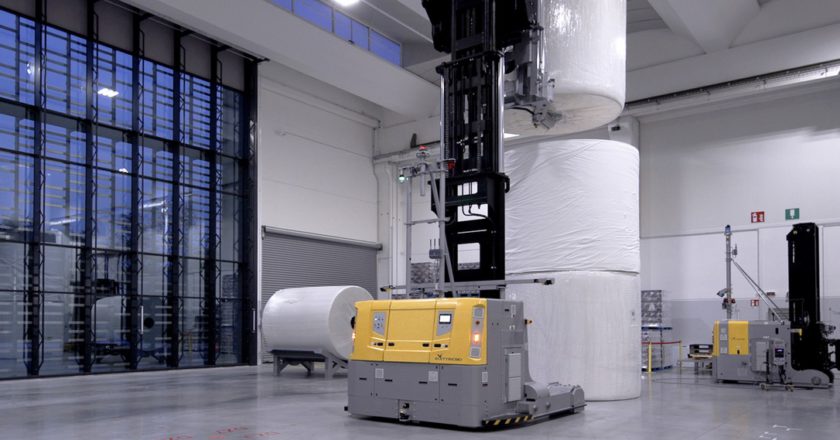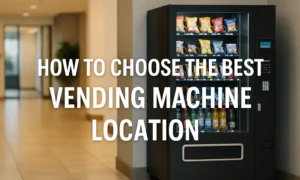A Laser Guided Vehicle is regarded as an AGV that uses a laser positioning system to navigate. An LGV Robot is not the same as an AGV. LGVs are vehicles equipped with a specific type of AGV guidance system. AGVs and LGVs have no distinguishing features because LGVs are AGVs with Laser Navigation Triangulation.
The targets are frequently installed on columns that alternate left and right every 50 feet in JBT installations. These targets have a highly reflective center that is encircled by a quarter-inch black border. In a facility, the marks must be precisely assessed. The survey locates the reflecting surface’s leftmost edge and accurately coordinates it on a CAD drawing, usually within one millimeter of what is represented on the drawing.
A theodolite, a transit survey tool, is used to do the survey. You may have seen this precise optical measurement tool in operation when surveying properties or on construction sites. If the LGV was scheduled to go a relatively short distance on a primary loop, the survey could be completed four hours. However, with a large facility, such as two square miles in size, the survey will most likely take two weeks.
What are the functions of Laser guided vehicles?
AGVs with Laser Navigation Triangulation are known as LGVs. They employ a laser locating device to move about the facility. These navigation lasers are mounted 10 to 15 feet in the air and rotate at a rate of several revolutions per second. The revolving sensors produce a continuous, fan-shaped beam of modulated light that interacts with reflective tape strips laid on the warehouse floor. These reflectors can be flat or cylindrical, each with its own set of advantages and disadvantages.
What AGVs are capable of Laser Guided Navigation?
As AGV’s dependability, laser navigation is commonly utilized in automatic forklift trucks in warehousing and stocking applications where precise positioning tolerance is required. Even though Laser Navigation Technology can be employed in Tow Tractors AGVs, Natural Navigation is becoming the new standard for this type of vehicle due to its versatility and ease of installation.
A versatile automated guided vehicle solution is laser-guided vehicles. LGVs are a more flexible alternative than older AGVs that navigate by following markers or cables in the floor or by following a magnet crumb trail. LGVs can go through a facility on a variety of paths, which can be changed as needed.
One of these revolving laser sensors is attached to each vehicle and interacts with targets placed along the course. The navigation algorithms at JBT recalculate the vehicle position 40 times per second, ensuring that path corrections are kept to a minimum. Layout Wizard is used to designing and modify virtual guide pathways.
An automated guided vehicle is a subtype of an Laser Guided Vehicle. For locating and Navigation, LGVs are equipped with a laser scanner. While laser guiding was initially presented in the 1980s, LGVs are now at the forefront of new industrial automation research and development. LGVs are becoming more adaptable, resilient, and autonomous as new and advanced technology and gadgets are integrated into them.
Laser-Guided Navigation is a type of Navigation that uses lasers to guide you.
Each LGV has a two-dimensional laser scanner on top, usually centered along the vehicle’s width axis and facing the front control panel. The scanner sends out a modulated laser beam that rotates and covers a 360° angle ten or more times per second across a distance of several hundred feet. Each of these flat or round landmarks sends a reflection back to the scanner, subsequently transformed into a coordinate reference. At any given time, at least three identifiable considerations are required by definition.
Know about Control Loop and Main Controller
LGVs rely on various components and inputs in addition to laser scanners to achieve a comprehensive steering system. One of them is odometry, which measures displacement and rotation using encoders and motion sensors attached to the vehicle’s motor wheel. For position precision, proper calibration of these motion sensors is critical. This fine-tuning must accommodate mounting differences and offsets effectively. Compact industrial PCs are most systems integrators’ preferred choice for LGV main controllers; however, some applications still employ classic PLCs.
The logic of the guidance system is implemented in PLC code that runs on the IPC. In a simplified approach, the laser scanner and odometry inputs are initially processed in the CPU, where an extended filter is used to calculate the absolute position of the LGV within the layout. The programming then uses these inputs to design the vehicle’s following duties and paths. The vehicle actuators receive outputs based on the designated paths after the planning and tracking analysis.
Know about the applications that are commonly used with LGV
LGVs come in a variety of sizes and configurations, including forklifts, clamps, and conveyors. Depending on the sort of product to be handled, the trucks are usually custom-built. Within the same facility, it is not uncommon to see multiple types of LGVs working together.
The central controller and higher-level apps are set up to recognize these distinctions and assign the appropriate tasks to each car based on them. Food and beverage, tissue and paper, and pharmaceuticals are just a few of the areas where LGVs are becoming increasingly popular.
Laser-guided vehicles provide several advantages.
LGVs are adaptable, quick, and effective. If you need speed and accuracy or a complex system with multiple destinations and tracks, they can be a significant addition to your warehouse. They are quick and straightforward to set up. The installation is also non-intrusive. All you have to do now is scatter reflectors across the facility. This means that LGVs won’t mess up your warehouse’s appearance. They are pretty precise. The powerful positioning algorithms allow for a position accuracy of + 5 mm.
Final thoughts
Onboard microprocessors and, in most cases, a supervisory control system assist with activities such as tracking and tracing modules and producing and distributing transport orders. A laser-guided vehicle can navigate any flexible and easy-to-program guide path network since it can calculate its location.






























































